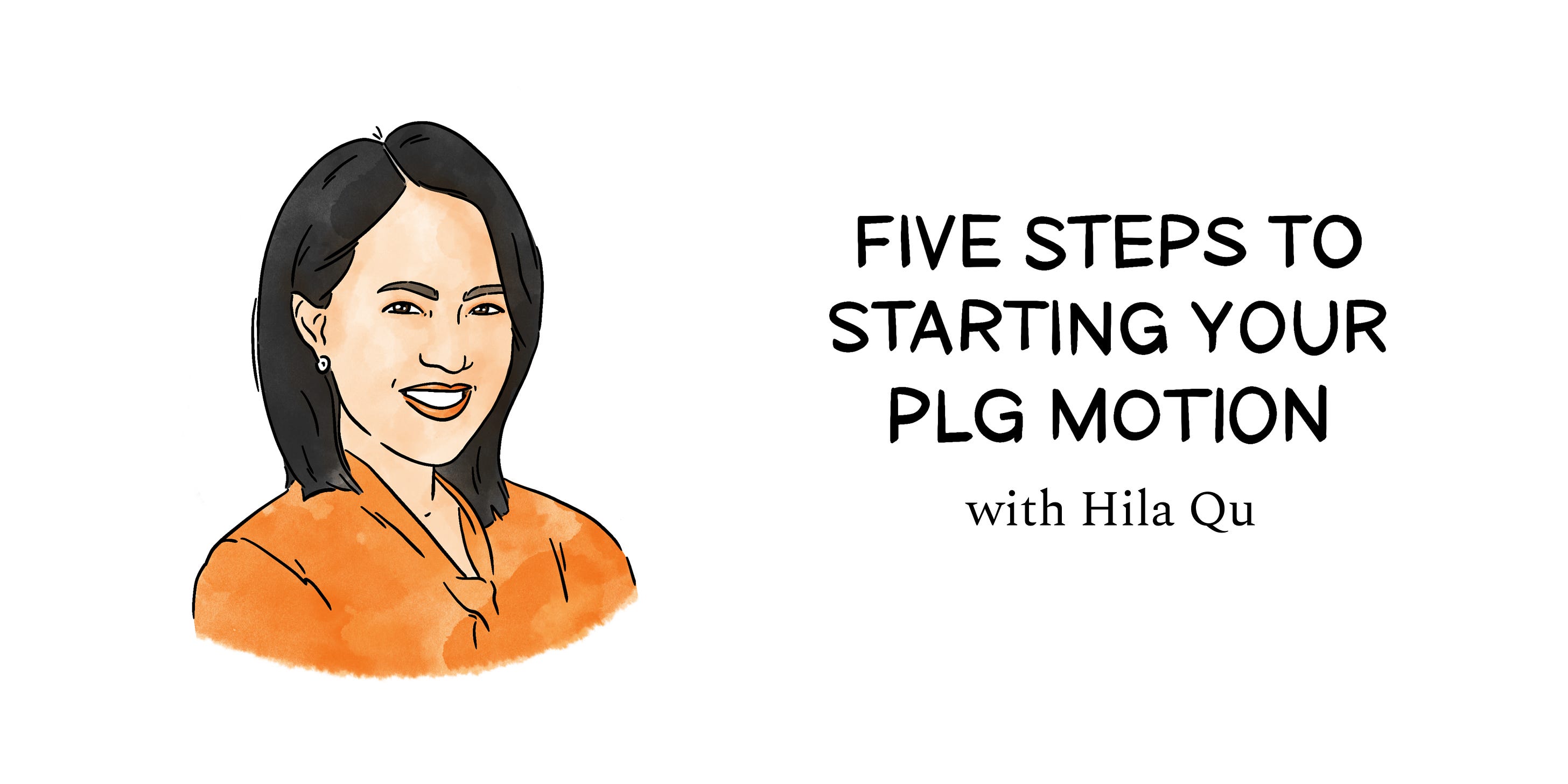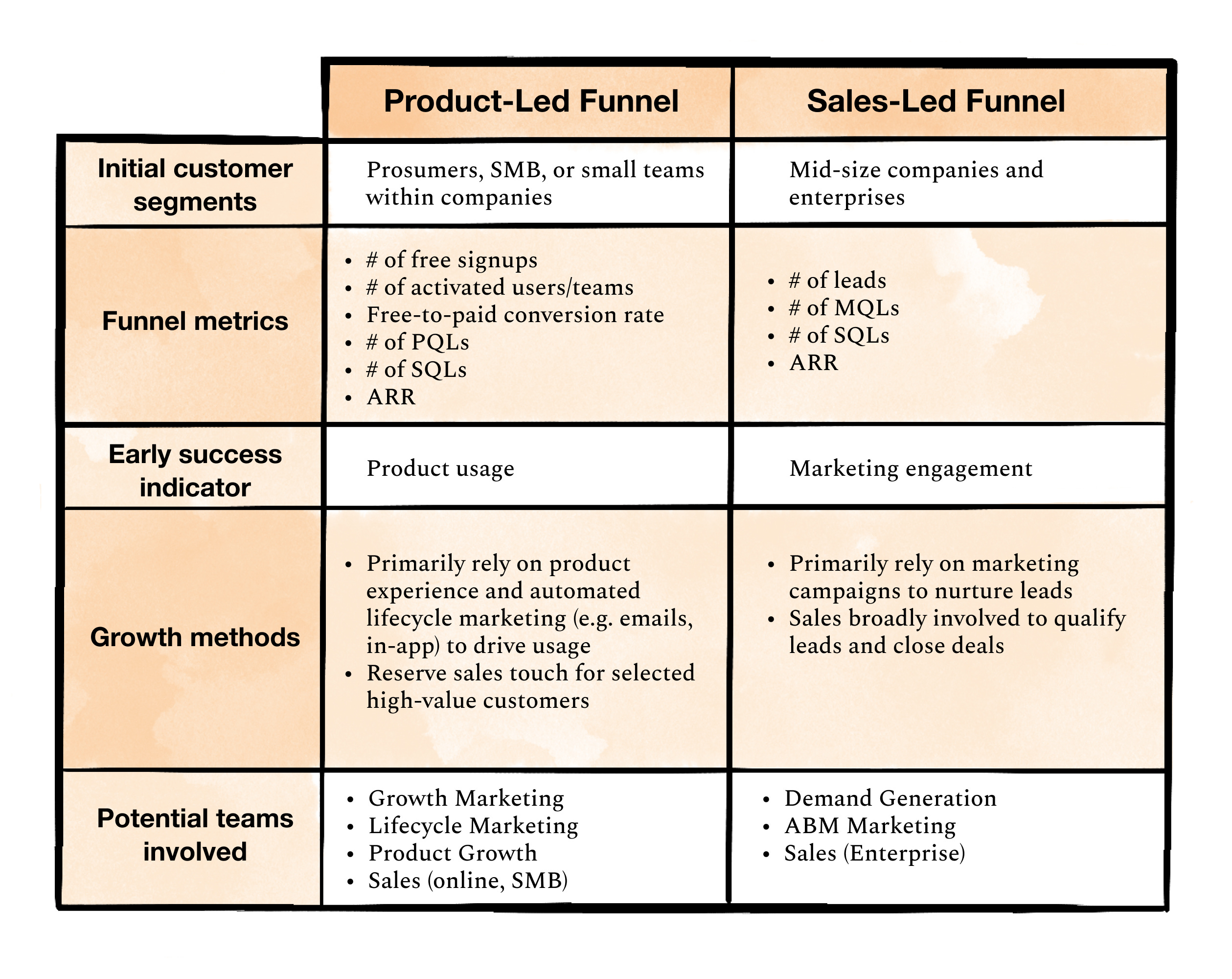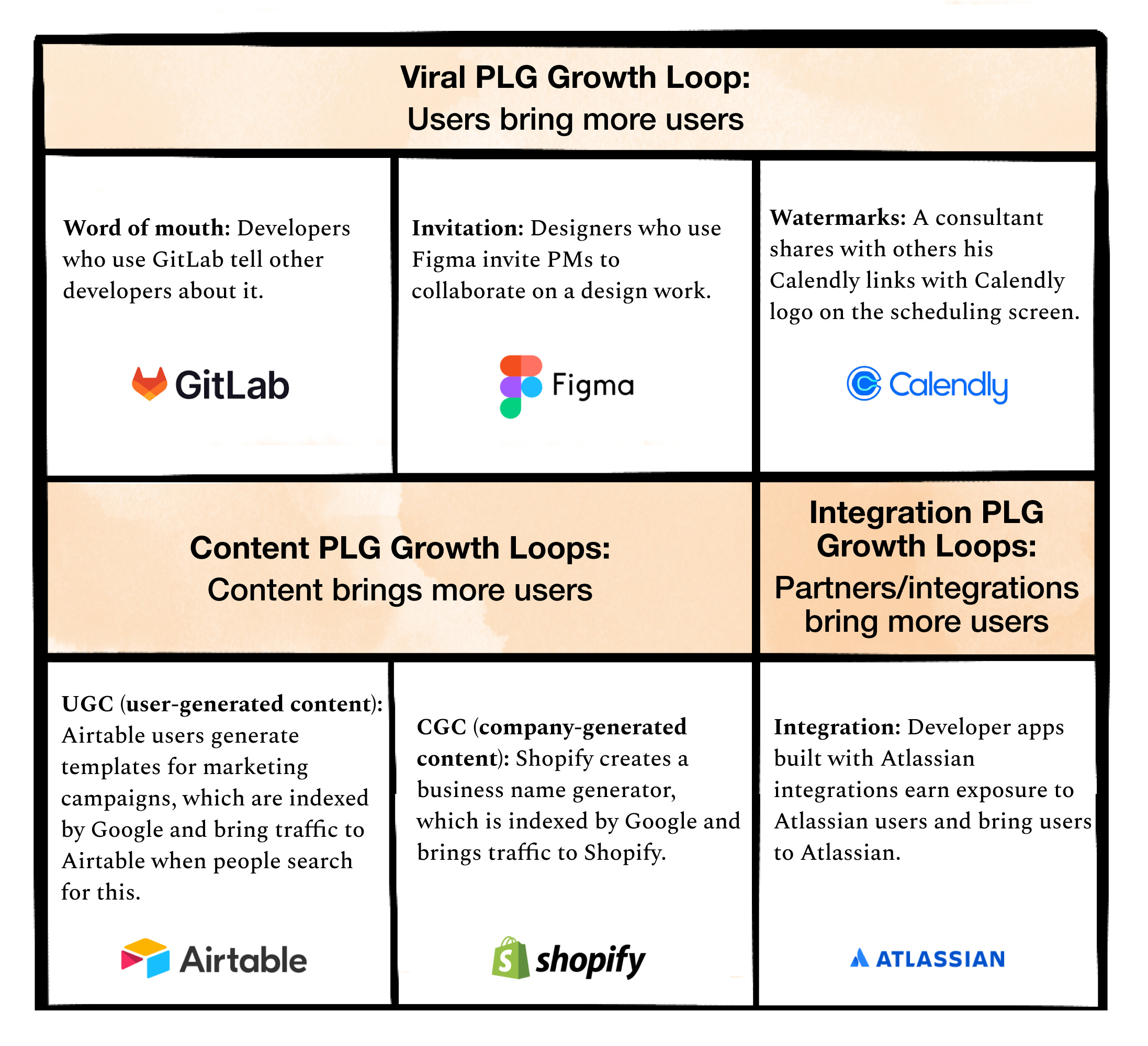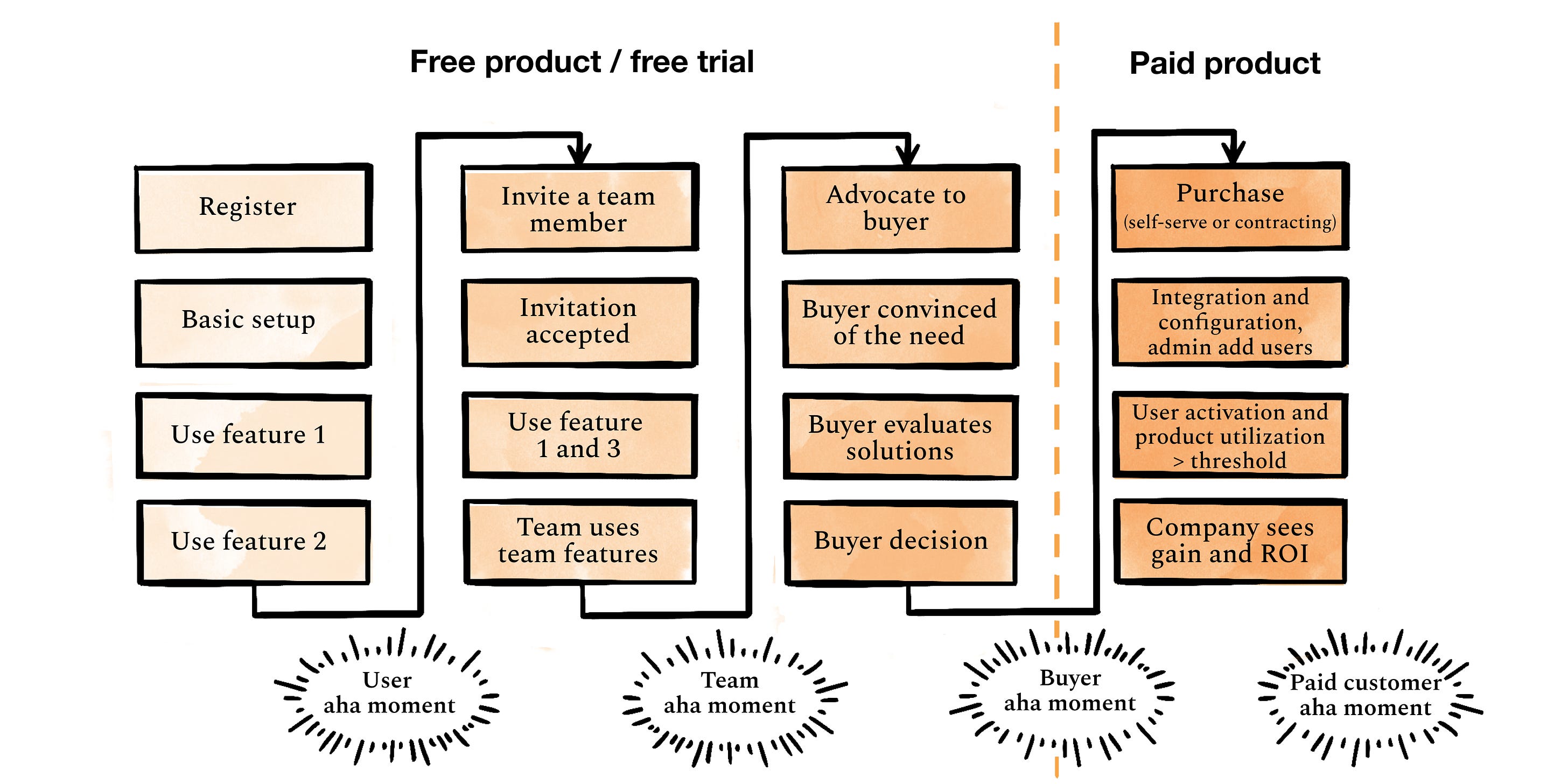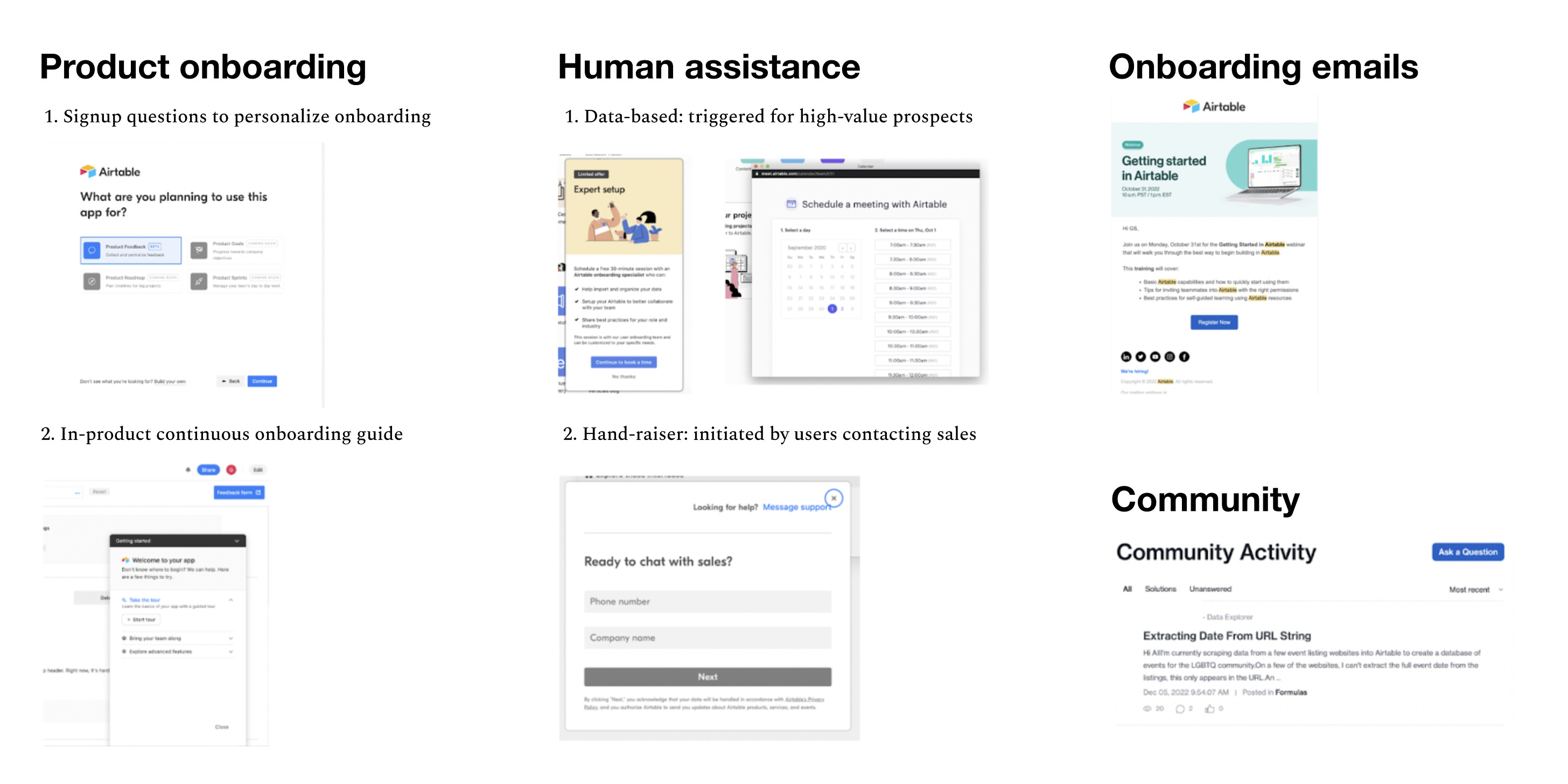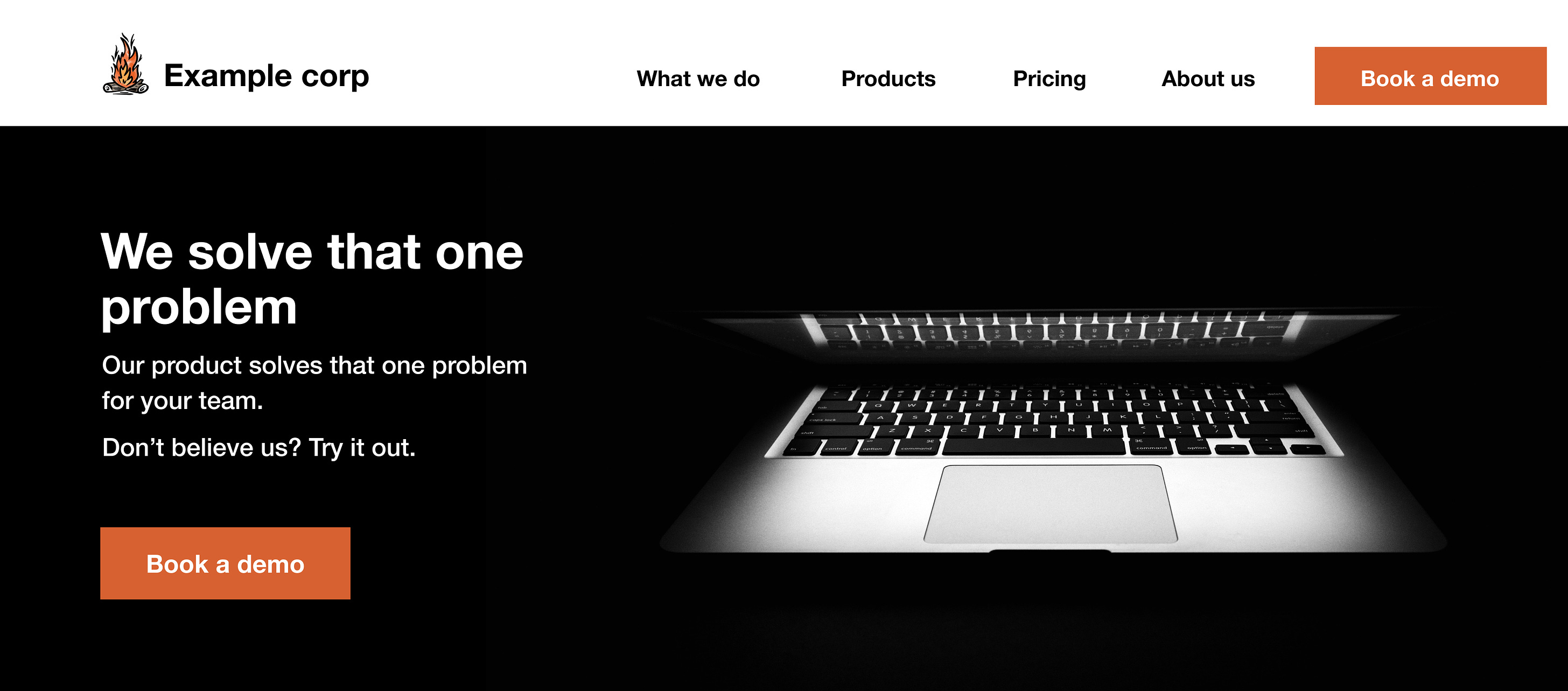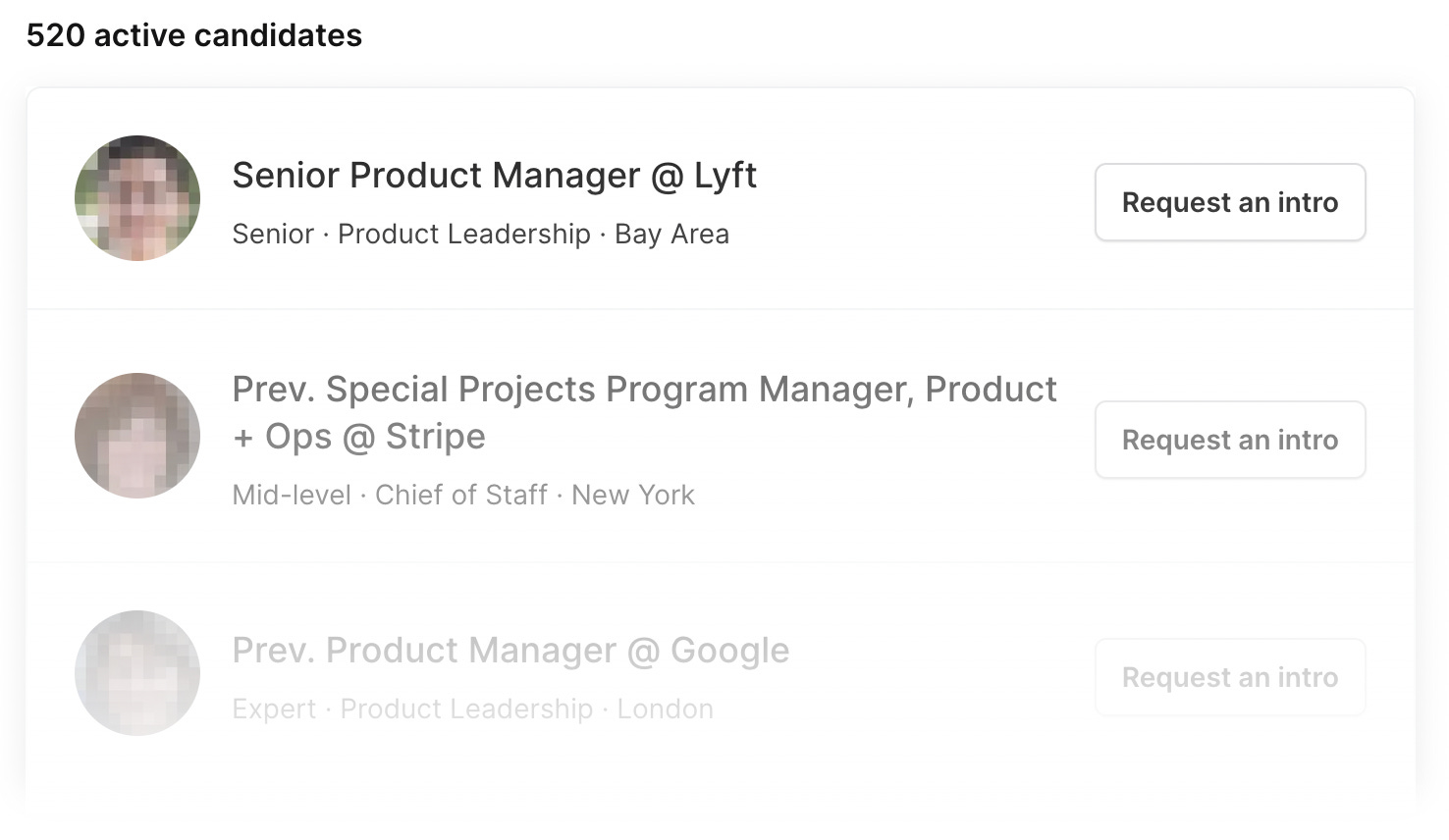Lenny's Newsletter - Five steps to starting your PLG motion
👋 Hey, Lenny here! Welcome to this month’s ✨ free edition ✨ of Lenny’s Newsletter. Each week I humbly tackle reader questions about product, growth, working with humans, and anything else that’s stressing you out about work. I’ve read hundreds of articles about product-led growth (PLG), and they all kind of blur together. So when founders ask me for advice on building their PLG motion, I still don’t know where to point them. Thus, when Hila Qu approached me about collaborating on a definitive deep-dive on building a PLG motion, I was thrilled. Hila helped scale Acorns from 1 million to 5 million users as their VP of growth, then joined GitLab, where she launched their PLG motion (on top of an established sales motion), and built their first-ever growth team. These days, between advising startups (e.g. Replit, SEON) on their PLG strategy, advising on Reforge’s upcoming new PLG course, and nerding out on product-led growth with top founders and growth leaders, Hila has been setting time aside to crystallize her advice on product-led growth. This post is the culmination of her firsthand experience, along with the many wins and failures she’s witnessed working with dozens of startups. Hila went far beyond my (already high) expectations putting this post together—sharing not only a step-by-step guide to building your PLG motion, but also adding a boatload of real-life examples, templates, and tools. So much so that we had to split it into two posts. This is part one, and part two will come next week. I’m really excited to share Hila’s work, and I can’t wait to hear what you think. You can find Hila Qu on LinkedIn, Twitter, and Substack. Make sure to check out the Reforge courses she teaches, Advanced Growth Strategy and Experimentation & Testing, and sign-up here to get updates on Reforge’s new PLG program which launches in Fall 2023. At its core, product-led growth (PLG) is about leveraging your product to acquire, activate, convert, retain, and monetize your user base. In PLG, your product is not only the set of features that solve customer pain points but also your go-to-market (GTM) motion, and your distribution and engagement channel. If done right, PLG is proven to have higher efficiency and broader reach than any other growth motion and can be a great complement to a sales-led motion. If you are thinking about adding a PLG motion for your B2B SaaS product, here are the five steps to get you there: Below, I’ll help you through each of these steps. Let’s get into it. Step 1. Map your funnelSales-led growth and product-led growth approach the customer journeys and funnels very differently. Each motion has benefits, and most successful B2B companies eventually layer both. You need to understand the differences between the two funnels because eventually you’ll need to build data infrastructure, design org charts, and create workflows to enable the measurement and coordination of both funnels. The traditional B2B sales-led funnel looks like this: The product-led funnel looks like this: As you can see, the starting points and ending points look similar, but the middle part—how to turn signups into revenue—is different: In a sales-led funnel, the B2B marketing team is responsible for generating signups/leads to fill the top of the funnel, as well as further nurturing and qualifying leads into MQLs (marketing qualified leads). They engage leads with marketing channels such as websites, emails, webinars, and retargeting ads, and for every meaningful touchpoint engagement, the leads get points added, for example:
Once the leads score passes a certain threshold, they are “qualified” into MQLs and handed over to the sales team for further screening and closing. This “lead nurturing” approach is essential, because a B2B product is complex and the buying cycle is long, with multiple steps and stakeholders; thus, extensive education and nurturing is necessary. However, this approach also largely assumes users can’t access B2B software until the contract is signed and that marketing engagement channels are the only way to nurture leads, which is no longer true during the PLG era. With the product-led funnel, the marketing team is still driving top-of-funnel, but since potential customers can access the free product right away, product usage becomes the primary lever for product education/evaluation and leads nurturing. Rather than “show” (e.g. sales demo) or “tell” (e.g. marketing campaign), potential users get to “do” (use the product themselves), which is much more powerful and direct. Therefore, quick activation (i.e. getting to the “aha moment”) and meaningful product usage become the key success factors for generating PQLs (product qualified leads), which can be then passed over to the sales team similarly to MQLs. In some cases, the prospect customers like the product so much, and the price fits their budget, that they may even purchase via a self-service checkout flow without talking to sales at all. Once you understand the differences between PLG and SLG, the next question you naturally ask is: Which motion should I start with? Thinking from first principles, the two main factors to picking your primary growth motion are (1) target customer segment and (2) product complexity:
For any company in between—and that is the majority of B2B SaaS companies—for maximum reach with high efficiency, there is a benefit to starting with one growth motion and eventually layering on the other. Companies like Canva and Slack started with PLG and added an SLG motion. Companies like HubSpot and GitLab started with SLG and added a PLG motion. GitLab actually started as an open source product. Developers used it for both personal and work purposes, and so we ended up selling into all segments (i.e. SMB, mid-market, enterprise). PLG would have been a natural fit, but since the early team established a sales motion first, it made sense for us to later layer on PLG to support SMB self-service purchases, which I’ll expand on below. As it turned out, the new PLG motion also generated additional usage-based leads for enterprise sales to go after. 🔑 Takeaway: If you don’t have a PLG funnel today, draw a potential funnel out on a whiteboard. Imagine how a potential customer would travel through that journey, and how your product and teams might need to change to support it. Step 2. Pick a starting pointTo be successful with PLG, you’ll need to invest in multiple areas at once and work through multiple initiatives. It is never as simple as making one change (e.g. opening a free trial or adding an onboarding tutorial). That being said, you can maximize the ROI of your PLG efforts by choosing the right focus area as your starting point. Ask yourself: What is the biggest constraint—and potential unlock—in your growth model? Is it (1) acquisition, (2) activation, (3) conversion, or (4) retention/expansion? The answer to that question should guide the choice of the initial focus area for your PLG efforts. Below, I will focus on the three areas where I consistently see the most opportunities: acquisition, activation, and conversion. The fourth, retention/expansion, is an equally valid focus area, but not one I’d suggest starting with, due to the complexity and effort required to improve those metrics. Focusing on acquisition, activation, or conversion first will provide the most impact and the fastest learnings, which can inform your PLG retention/expansion roadmap. 1. Product-led acquisitionIf you have a small user base, or your B2B SaaS product has an inherent viral or network-effect component, then you should probably focus on product-led acquisition—using your product to generate more users/leads. While you can leverage marketing or sales to acquire new users, the benefit of product-led acquisition is that it is highly scalable and cost-efficient. Once established, you won’t have to keep spending money to buy ads or make outbound calls. Product-led acquisition mechanisms tend to generate benefits over a long period of time. Below are a few examples of SaaS products’ product-led acquisition strategies (in Reforge’s language, “growth loops”): 2. Product-led activationWhile sales and customer success are still critical and necessary for B2B customer onboarding, for a PLG product, you want to have your product do as much work as possible. From my experience as a growth advisor, activation is always an area with tons of opportunity to be exploited. I use a two-step framework to improve activation: Step 1. Define the aha moment For B2B PLG products, the concept of the aha moment is much more nuanced than Facebook’s famous “7 friends in 10 days.” Taking GitLab as an example, when a developer signs up for the free product, she might connect with her personal repository, test out multiple features, and decide GitLab is a great DevOps solution for her engineering team. But digging into the data, we saw that the pivotal moment happens when she invites another developer to join the same project, and together they begin to collaborate on issues and workflows. Therefore, rather than focusing on an aha moment based on a single user’s behavior, we set “2+ users and 2+ features within the first 14 days” as the “team aha moment.” Then we tried to drive all new free accounts toward that goal. For B2B, there are actually multiple aha moments for different personas.
Step 2. Use a multi-channel approach Product-led activation doesn’t mean you rely only on product to get users to the aha moment: It is product-led, not product-only. From an ROI and reach perspective, you should spend a lot of time optimizing your product onboarding, because it touches almost 100% of new users and is scalable/cost-efficient. But you also have multiple weapons in your activation toolbox:
The ideal PLG product-activation experience is led by product, powered by data, and supported by automated and low-touch channels, with high-touch assistance available to your high-value customers. 3. Product-led conversionIf product-led acquisition is about how to grow net new users scalably and efficiently and product-led activation is about how to onboard and retain these newly acquired users, then product-led conversion is all about how to convert free users to revenue. It represents a big opportunity because it can directly impact your ARR. If you recall the PLG funnel, there are primarily two paths for product-led conversion:
If you don’t have a self-service checkout flow, you need to build that first. Once you have this, there’s always tons of room to improve your conversion rate through new experiments. A PQL system requires more investment upfront but also provides a much bigger return. Let’s explore both options. Option 1. Self-service conversion A self-service purchase happens when free users convert to paid customers or upgrade to a higher tier of product via the in-product self-service checkout flow, without talking with sales. Among my PLG advisory clients, I tend to find low-hanging fruit in three areas related to the self-service checkout flow:
I suggest teams consider starting with these low-hanging fruit before later revisiting pricing and packaging design, which is also a huge growth lever. Option 2. Product-qualified leads (PQLs) When free customers demonstrate certain behaviors, hit certain usage thresholds, or fit certain firmographic criteria, they are qualified into PQL status and generally sent to the sales team to follow up. If your company has already accumulated a good amount of free active users, then it might make sense for you to set up a PQL motion, because it’s possible that a segment of your free users aren’t interacting with marketing campaigns (thus not qualifying to MQL) but happily use the free product and are ripe for a sales conversation. To close on this section, among acquisition, activation, and conversion, so much can be done. How do you find the highest-ROI focus area? As one example, the GitLab growth team picked activation and self-service purchase as our first two focus areas, because there is much low-hanging fruit and we knew we could generate immediate impact. We then quickly expanded into PQL, because GitLab had a large free user base and its developer audience didn’t like to read marketing emails. We started from hand-raiser PQLs, where customers submit a sales contact form directly inside the product, and saw a 3x higher conversion rate than with typical MQLs. Then we expanded into usage-based PQLs, where we identified high potential prospects via usage pattern and routed them right into Salesforce. We built the PQL data pipeline ourselves, but I also saw companies leveraging PQL tools (I suggest some below) to fast-track the process. 🔑 Takeaway: Identify what is currently the biggest constraint in your growth model. Is it acquisition (number of users), activation (new user usage), or conversion (ARR)? Within each of these areas, you can also drill down and prioritize low-hanging fruit. You will boost your organization’s confidence in PLG by choosing the starting point with the highest ROI first. Step 3. Anticipate the most common pitfallsBefore going further, I want to spend some time sharing the most common pitfalls you’re likely to face when adding a PLG motion, to help you avoid them. Here’s an overview of the most common challenges, how to identify them, and how to address them: Pitfall #1: Lack of commitment and investmentI often see companies wanting to do PLG but not committing any meaningful resources to give it a chance to be successful. You need to think deeply about why you want to add a PLG motion. What is the problem you are trying to solve, and what is the goal you are trying to achieve, with PLG? Make sure you are considering PLG not because it’s trendy but for a clear strategic reason. Because the investment—and the change required to stand up a PLG motion—is not trivial. Each of the following is a valid strategic reason:
You may need to spend some time to think deeper, conduct research, and collect evidence. But if you build enough conviction and believe PLG is a strategic fit, you should commit to investing in the roadmap, team, and infrastructure for the next one or two years at least. Pitfall #2: The product is not readyIn order to go PLG, you need to have a product vehicle: a free version or a free trial of your product. Some companies have these vehicles in place already. At GitLab, we had a free version and a free trial, plus an open source product. I didn’t need to build these from scratch—the product already had a large free user base. In that case, the growth team could start developing usage-data insights and creating a PLG funnel right away. But there are also companies that enter the PLG era without an existing free version or free trials. For example, when visitors land on their website, the only CTAs available are “request a trial” or “book a demo.” If that is the case, the first step is to open a free trial experience to everyone or create a free version. Without that, there is no “product” in your product-led growth. When you’re building a free product for the first time, you’ll need to overcome design and technical complexities to build that free experience. But more importantly, you’ll need to overcome the fear of “losing control.” For example, a marketing leader from a leading security B2B company shared with me her experience of advocating for the company to move from closed trials to open trials as first step toward PLG:
Here is a tip: If you face resistance, you can start PLG as an experiment. For example, instead of making a shift to PLG permanently, open a free trial to everyone for some time and see how that impacts your signups, leads, and upgrades. It is much easier to have a meaningful discussion when you can ship the change first and have some real data. Pitfalls #3 and #4: Lack of data infrastructure and foundation; lack of PLG expertise and talentThese two go hand in hand. Ask yourself this question: Assuming you have a free product, do you have the data to track how many free users sign up, which features they use most, and which usage pattern correlates with a higher free-to-paid conversion rate? If your answer is no, then you need to first build the PLG data infra foundations. There is no way around it. You have to invest in these areas to enable PLG—e.g. hire the right growth/data leader; commit the resources to collect and analyze the data—and it takes time. The good news is that it’s very common, especially among B2B companies starting with a sales motion. A strong data foundation will not only support your PLG motion but also enable you to take a more data-driven approach in product development and customer success, standing out from your competitors. I will unpack what it takes to build PLG infra in part 4 of this post. Once you have the data foundation in place, you may ask yourself the second question: Assuming you have the data and metrics, do you know concepts like “team aha moment” and “product qualified leads (PQL),” and do you have frameworks to get users/customers to reach this status? If you or your team can’t answer these questions, then you basically don’t have PLG expertise and talent in-house. Growth itself is still relatively new, and people with B2B PLG experience are even rarer. Thus, companies often find it very hard to hire PLG talent. I suggest you take a three-point phased approach:
I recommend starting with (1) and (2), to first validate the fit for PLG. Jump-start the motion and get some early wins. For a recent advisory client of mine, the internal PLG leader I worked with was their former head of investor relationships (who is very analytical and can mobilize resources across the company), and together we drove great success. As you gain more confidence, move to hiring externally. This way, you know you are not moving too quickly too prematurely, and then you can hire the growth leader/team that is the best fit for your specific needs. Pitfall #5: Resistance from current teamsThis is often the biggest challenge when an SLG company tries to layer on PLG:
The solution goes back to executive buy-in and commitment, but there also needs to be alignment from functional leaders in sales, marketing, and growth/product to try this out. Initially there will be a lot of ambiguity about how the different pieces fit together and how the new workflow between marketing, sales, and growth should work. But I often see successful teams eventually align on the funnel, metrics, org design, and incentives to make this streamlined and effective. 🔑 Takeaway: You need a good reason and strong conviction to launch a PLG motion, because the investment is not trivial. If you are layering PLG on top of SLG, expect some resistance from internal teams and workflows. If you are starting net-new with PLG, your main challenge will be a lack of foundation and expertise. And make sure you have a vehicle for PLG, either a free trial or free version. If not, the first step is to build one. Parts 4 and 5—Setting up the correct infrastructure, and building your team, coming next weekDon’t miss it. Subscribe now 👇 Thank you, Hila! You can find Hila on LinkedIn, Twitter, and Substack. Make sure to check out the Reforge courses she teaches, Advanced Growth Strategy and Experimentation & Testing, and sign-up here to get updates on Reforge’s new PLG program which launches in Fall 2023. See y’all next week! 📣 Join Lenny’s Talent Collective 📣If you’re hiring, join Lenny’s Talent Collective to start getting bi-monthly drops of world-class hand-curated product and growth people who are open to new opportunities. If you’re looking for a new gig, join the collective to get personalized opportunities from hand-selected companies. You can join publicly or anonymously, and leave anytime. ❤️🔥 Featured job opportunities
If you’re finding this newsletter valuable, share it with a friend, and consider subscribing if you haven’t already. Sincerely, Lenny 👋 |
Older messages
An inside look at how Figma builds product | Yuhki Yamashita (CPO of Figma)
Sunday, January 8, 2023
Listen now (69 min) | Yuhki Yamashita is Chief Product Officer at Figma. Prior to Figma, e was Head of Design of Uber's New Mobility efforts, and before that a product manager at Google and
Leveraging mentors to uplevel your career | Jules Walter (YouTube, Slack)
Thursday, January 5, 2023
Listen now (70 min) | Jules Walter is a product leader at YouTube and co-founder of both the Black Product Managers Network and Codepath.org. Previously, he led monetization and mobile growth teams at
Virality is a myth (mostly)
Tuesday, January 3, 2023
And why you are probably under-investing in influencers and PR
Countdown of the top 10 episodes of the year
Thursday, December 29, 2022
Listen now (61 min) | With clips of my favorite insights from each episode
The best of Lenny’s Newsletter
Tuesday, December 27, 2022
If you read one post this year, read this one—my most popular posts and podcasts, categorized and organized
You Might Also Like
🚀 Ready to scale? Apply now for the TinySeed SaaS Accelerator
Friday, February 14, 2025
What could $120K+ in funding do for your business?
📂 How to find a technical cofounder
Friday, February 14, 2025
If you're a marketer looking to become a founder, this newsletter is for you. Starting a startup alone is hard. Very hard. Even as someone who learned to code, I still believe that the
AI Impact Curves
Friday, February 14, 2025
Tomasz Tunguz Venture Capitalist If you were forwarded this newsletter, and you'd like to receive it in the future, subscribe here. AI Impact Curves What is the impact of AI across different
15 Silicon Valley Startups Raised $302 Million - Week of February 10, 2025
Friday, February 14, 2025
💕 AI's Power Couple 💰 How Stablecoins Could Drive the Dollar 🚚 USPS Halts China Inbound Packages for 12 Hours 💲 No One Knows How to Price AI Tools 💰 Blackrock & G42 on Financing AI
The Rewrite and Hybrid Favoritism 🤫
Friday, February 14, 2025
Dogs, Yay. Humans, Nay͏ ͏ ͏ ͏ ͏ ͏ ͏ ͏ ͏ ͏ ͏ ͏ ͏ ͏ ͏ ͏ ͏ ͏ ͏ ͏ ͏ ͏ ͏ ͏ ͏ ͏ ͏ ͏ ͏ ͏ ͏ ͏ ͏ ͏ ͏ ͏ ͏ ͏ ͏ ͏ ͏ ͏ ͏ ͏ ͏ ͏ ͏ ͏ ͏ ͏ ͏ ͏ ͏ ͏ ͏ ͏ ͏ ͏ ͏ ͏
🦄 AI product creation marketplace
Friday, February 14, 2025
Arcade is an AI-powered platform and marketplace that lets you design and create custom products, like jewelry.
Crazy week
Friday, February 14, 2025
Crazy week. ͏ ͏ ͏ ͏ ͏ ͏ ͏ ͏ ͏ ͏ ͏ ͏ ͏ ͏ ͏ ͏ ͏ ͏ ͏ ͏ ͏ ͏ ͏ ͏ ͏ ͏ ͏ ͏ ͏ ͏ ͏ ͏ ͏ ͏ ͏ ͏ ͏ ͏ ͏ ͏ ͏ ͏ ͏ ͏ ͏ ͏ ͏ ͏ ͏ ͏ ͏ ͏ ͏ ͏ ͏ ͏ ͏ ͏ ͏ ͏ ͏ ͏ ͏ ͏ ͏ ͏ ͏ ͏ ͏ ͏ ͏ ͏ ͏ ͏ ͏ ͏ ͏ ͏ ͏ ͏ ͏ ͏ ͏ ͏ ͏ ͏ ͏ ͏ ͏ ͏ ͏ ͏ ͏ ͏ ͏
join me: 6 trends shaping the AI landscape in 2025
Friday, February 14, 2025
this is tomorrow Hi there, Isabelle here, Senior Editor & Analyst at CB Insights. Tomorrow, I'll be breaking down the biggest shifts in AI – from the M&A surge to the deals fueling the
Six Startups to Watch
Friday, February 14, 2025
AI wrappers, DNA sequencing, fintech super-apps, and more. ͏ ͏ ͏ ͏ ͏ ͏ ͏ ͏ ͏ ͏ ͏ ͏ ͏ ͏ ͏ ͏ ͏ ͏ ͏ ͏ ͏ ͏ ͏ ͏ ͏ ͏ ͏ ͏ ͏ ͏ ͏ ͏ ͏ ͏ ͏ ͏ ͏ ͏ ͏ ͏ ͏ ͏ ͏ ͏ ͏ ͏ ͏ ͏ ͏ ͏ ͏ ͏ ͏ ͏ ͏ ͏ ͏ ͏ ͏ ͏ ͏ ͏ ͏ ͏ ͏ ͏ ͏ ͏ ͏ ͏ ͏
How Will AI-Native Games Work? Well, Now We Know.
Friday, February 14, 2025
A Deep Dive Into Simcluster ͏ ͏ ͏ ͏ ͏ ͏ ͏ ͏ ͏ ͏ ͏ ͏ ͏ ͏ ͏ ͏ ͏ ͏ ͏ ͏ ͏ ͏ ͏ ͏ ͏ ͏ ͏ ͏ ͏ ͏ ͏ ͏ ͏ ͏ ͏ ͏ ͏ ͏ ͏ ͏ ͏ ͏ ͏ ͏ ͏ ͏ ͏ ͏ ͏ ͏ ͏ ͏ ͏ ͏ ͏ ͏ ͏ ͏ ͏ ͏ ͏ ͏ ͏ ͏ ͏ ͏ ͏ ͏ ͏ ͏ ͏ ͏ ͏ ͏ ͏ ͏ ͏ ͏ ͏ ͏ ͏ ͏ ͏ ͏ ͏ ͏ ͏

